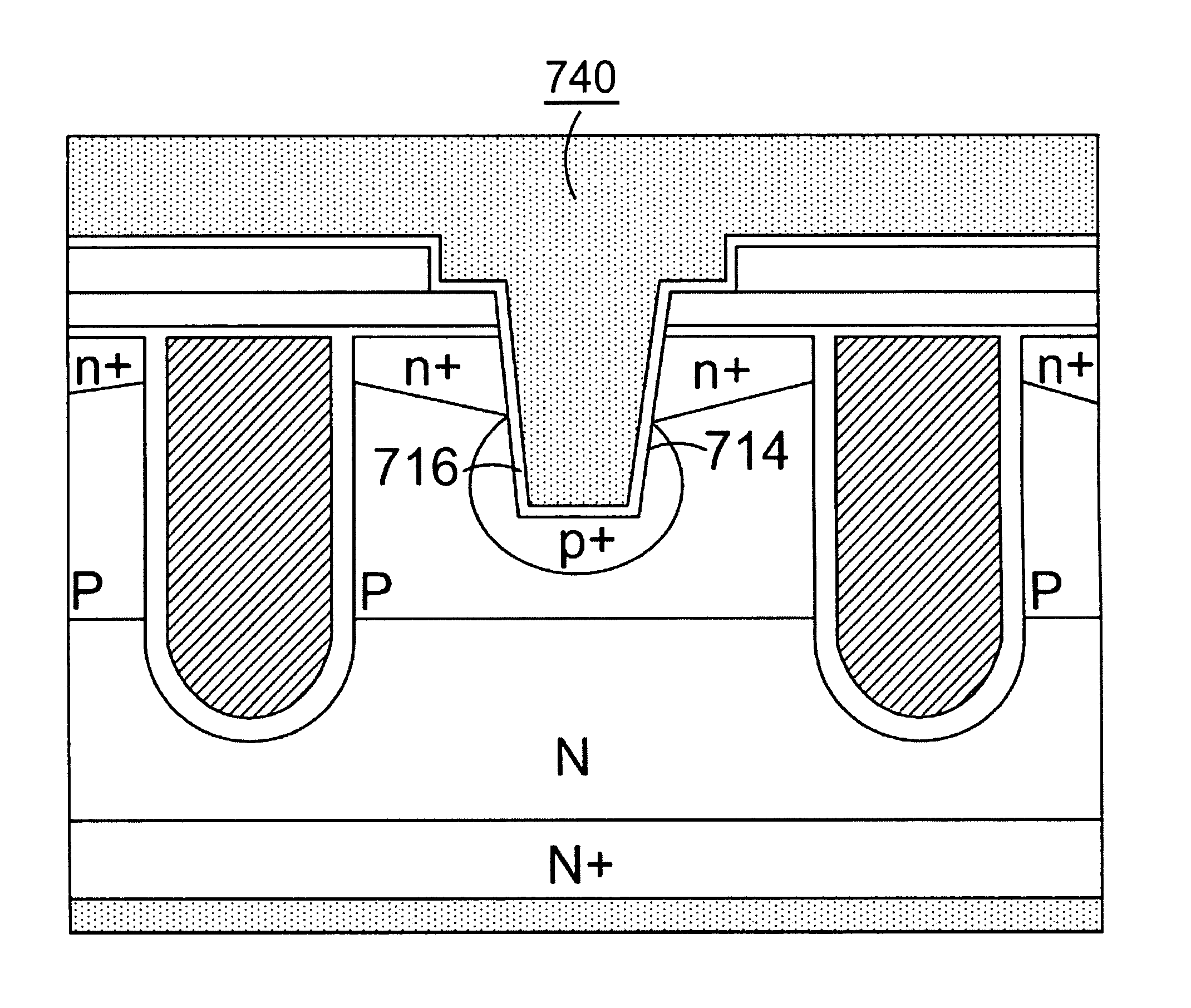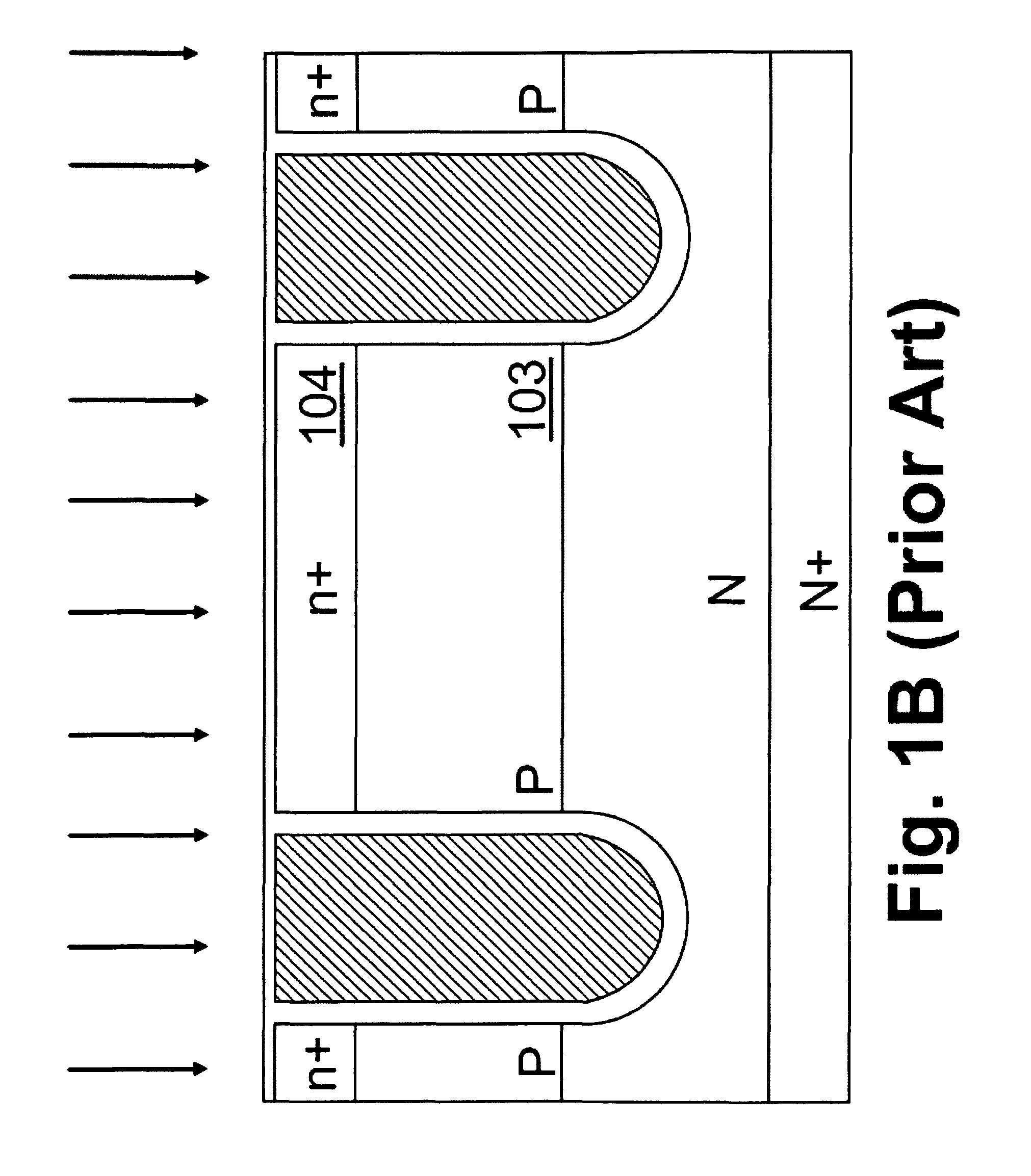Trench MOSFET structures using three masks process
a mosfet and mask technology, applied in the field of cell structure and device configuration of semiconductor devices, can solve the problems of difficult turning and reduced emitter injection efficiency of parasitic npn, and achieve the effect of reducing the area occupied by cells and reducing the size of devices
- Summary
- Abstract
- Description
- Claims
- Application Information
AI Technical Summary
Benefits of technology
Problems solved by technology
Method used
Image
Examples
Embodiment Construction
[0049]Please refer to FIG. 3A for a preferred embodiment of this invention, which also is the X1-X1′ cross section of FIG. 2B, where an N-channel trench MOSFET is formed on an N+ substrate 300 coated with back metal 390 of Ti / Ni / Ag on rear side as drain electrode. Onto said N+ substrate 300, a lighter doped N epitaxial layer 301 is grown, and a plurality of first trenched gates 310 filled with doped poly 311 onto a gate oxide 320 are formed wherein. Near the top surface of P body regions 304, n+ source regions 308 are formed with Gaussian-distribution from the open region of trenched source-body contact 314 to channel region near said first trenched gate 310. Each of said trenched source-body contacts 314 filled with W (tungsten) plug 315 padded by a barrier layer 316 of Ti / TiN or Co / TiN or Ta / TiN are penetrating through a contact interlayer comprising a layer of un-doped SRO (Silicon Rich Oxide) 330-1 and a layer of BPSG (Boron Phosphorus Silicon Glass) or PSG (Phosphorus Silicon G...
PUM
 Login to View More
Login to View More Abstract
Description
Claims
Application Information
 Login to View More
Login to View More - R&D
- Intellectual Property
- Life Sciences
- Materials
- Tech Scout
- Unparalleled Data Quality
- Higher Quality Content
- 60% Fewer Hallucinations
Browse by: Latest US Patents, China's latest patents, Technical Efficacy Thesaurus, Application Domain, Technology Topic, Popular Technical Reports.
© 2025 PatSnap. All rights reserved.Legal|Privacy policy|Modern Slavery Act Transparency Statement|Sitemap|About US| Contact US: help@patsnap.com



